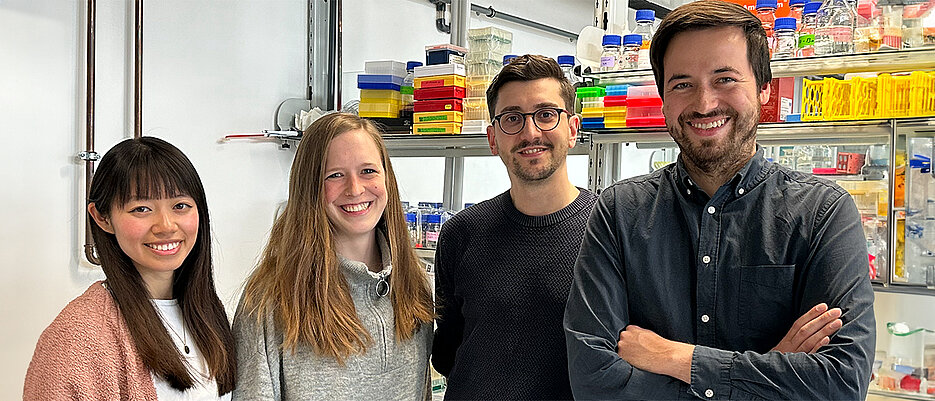Researchers at the University of Würzburg have discovered a new function of the oncoprotein MYCN: It not only helps cancer cells to grow stronger, but also makes them more resistant to drugs.

Oncoproteins are actually vital to human survival: thousands of them in our bodies ensure that cells grow and divide. They help heal wounds, repair genetic damage and boost our immune systems. But when oncoproteins stop working properly, things can get dangerous – they cause uncontrolled cell growth and tumours. The oncoprotein MYCN, for example, is the cause of many aggressive cancers and tumours that affect children in particular.
“MYCN proteins regulate the production of messenger RNA (mRNA) in the cell nucleus and thus the production of proteins that promote cell growth”, explains Martin Eilers, head of the Department of Biochemistry and Molecular Biology at the University of Würzburg (JMU), Germany. “If this process gets out of control, it can lead to excessive growth, the development of mutations and ultimately cancer.”
Second, Previously Unknown Function Identified
Together with his team, Eilers has now discovered a second function of MYCN in addition to the regulation of mRNA production: similar to a danger sensor, MYCN can warn a cancer cell if there are problems with the maturation of mRNA. This then triggers the cell’s internal self-protection mechanisms, such as the activation of cell repair or the production of protective molecules. “MYCN is therefore not only responsible for the rapid growth of a cancer cell, but also makes it more resistant to external stressors – for example, to the drugs we want to use to cure the cancer”, says the biochemist.
Here is how it works: Unlike previously known, MYCN proteins also bind directly to mRNA and exist in the cell in either DNA- or mRNA-bound form. If the maturation of the mRNA is disturbed, they switch from the DNA-bound to the mRNA-bound form. This switch then triggers cell protection.
“This finding challenges a model that has existed for decades for one of the most important groups of oncogenes”, says Dimitrios Papadopoulos, a postdoctoral researcher in Eilers’ team. “Mechanistically, it explains many biochemical properties of MYCN that were not previously understood. For example, they explain the role of subsections of the MYCN protein that were known to be important for MYCN function, but not why.”
Basis for the Development of New Drugs
In several national and international collaborations, Eiler’s research group is working on the development of drugs that can target MYCN by inducing the degradation of these proteins in cancer cells. Researchers from the Massachusetts Institute of Technology (MIT) and the Institute of Molecular Biology in Mainz are involved. “In the search for these drugs, known as PROTACs, it is crucial to know exactly how MYCN works and to understand which partners the protein interacts with”, explains Papadopoulos. “PROTAC stands for ´proteolysis targeting chimera´ and refers to novel drugs that can specifically induce the degradation of oncoproteins. The next step will be to develop targeted drugs that attack MYCN mRNA complexes – we also want to understand the exact function of these compounds.”
The research was funded by the European Research Council and German Cancer Aid.
About the Study
D. Papadopoulos, S. A. Ha, D. Fleischhauer, L. Uhl, T. J. Russell, I. Mikicic, K. Schneider, A. Brem, O. R. Valanju, G. Cossa, P. Gallant, C. Schuelein-Voelk, H. M. Maric, P. Beli, G. Buchel, S. M. Vos, and M. Eilers. 2024. ´The MYCN oncoprotein is an RNA-binding accessory factor of the nuclear exosome targeting complex´, Mol Cell. DOI: 10.1016/j.molcel.2024.04.007



